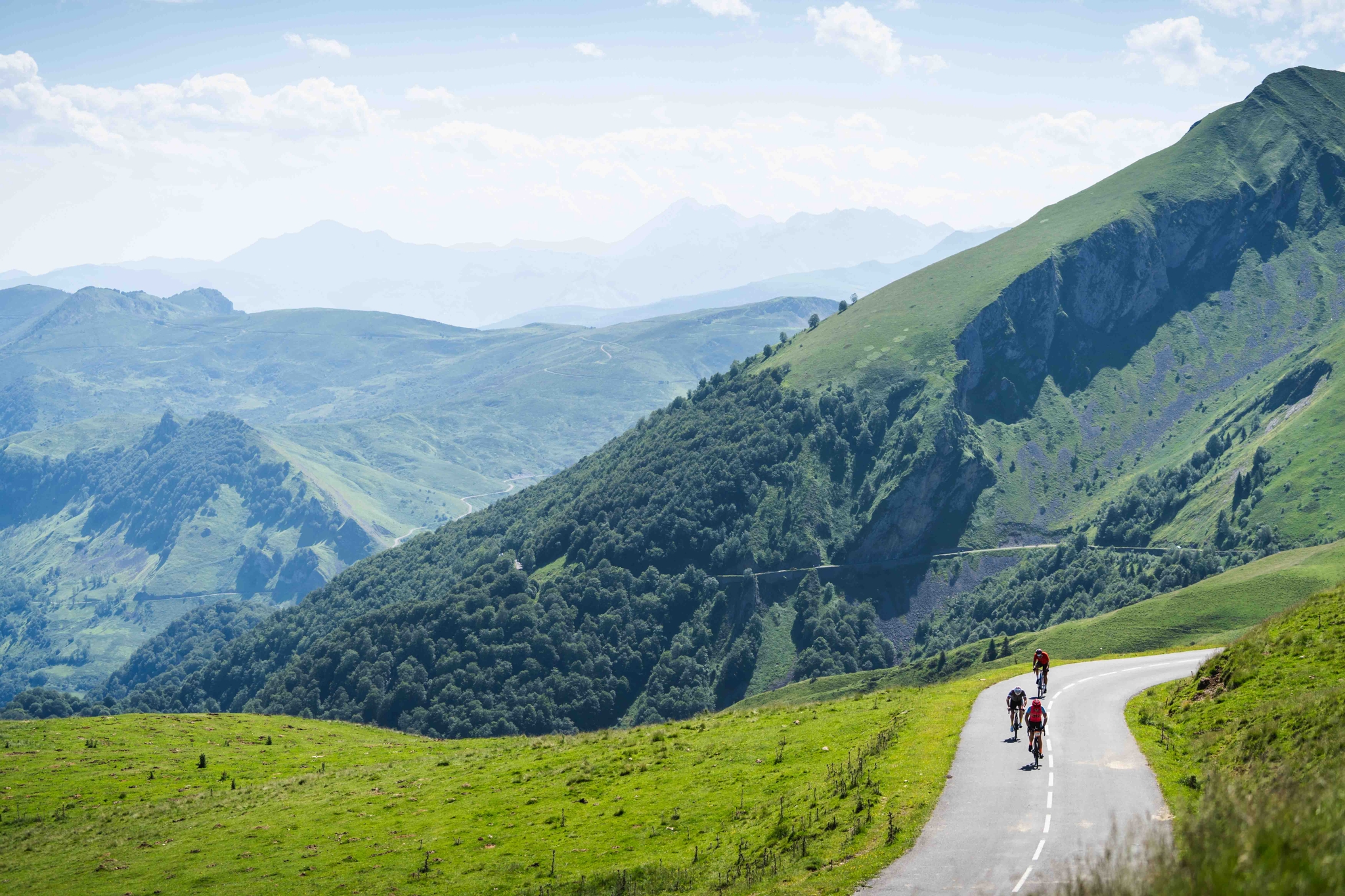The Haute Route in Béarn Pyrenees

This year, the Haute Route Pyrenees has chosen the royal city of Pau, in Béarn Pyrenees, as both the starting and finishing city. Rich in history, Pau is also recognized as one of the major cities in the world of cyclosport, having hosted stages of the Tour de France for many years (75th participation in 2024).
On July 1st, the Haute Route riders will set off from Pau through the Ossau Valley with its high mountain landscapes, valleys shaped by the people who live and work there, lakes, and of course, mountain passes. Among these are the famous Aubisque and Soulor passes, which will be part of the final stages of this extraordinary cyclosportive race.
Col d’Aubisque
A great classic of the Tour de France, with a 4-5% gradient ramp up to Eaux-Bonnes, then serious slopes up to Gourette (often at 8%), before the final high mountain scenery amidst alpine meadows and at the foot of the lofty peaks of Ger and Médaa, with the last 4 km consistently at 9%.
Col du Soulor
Located at 1,471 meters above sea level on the border between the Pyrénées-Atlantiques and Hautes-Pyrénées, it is the passage between the Val d’Azun and the Ouzom Valley, where pastoral life is very present. It offers an ascent of 19.40 km and an elevation gain of 1,019 meters, with an average slope of 5.25% and a maximum of 11%.
Want to continue your journey through Béarn Pyrenees? Continue your route towards the Aspe Valley with the equally famous Abérouat, Marie-Blanque, La Pierre Saint-Martin, and Pourtalet passes.
Col de l’Abérouat
The climb to the village of Lescun is gentle with an average of 7.6%, then 9% over 4 km. The second part up to the refuge features quite irregular sections with gradients sometimes reaching 16%. With very little rest, you’ll need to be resilient to tackle the last three kilometers (12.5% average). However, the panorama over the Lescun cirque everywhere encourages restorative pauses.
Col de Marie-Blanque
A pass with an iconic name (a large bird of prey, which you might be lucky to see) and an equally iconic profile: a warm-up over the first 2 kilometers, then the next three increase the pressure (5% to 7%), and the challenge comes with 10% then 12%. Beware, the higher you go, the steeper it gets, ending at 14%!
Col de la Pierre Saint-Martin
A pass worthy of the Tour de France, both in scale and accessibility. After a peaceful agricultural valley, the very steady climb through the forest brings you to a magnificent high mountain landscape with easier final slopes.
Col du Pourtalet
The “staircase” pass: a very irregular gradient with three successive ramps around 7% alternating with numerous false flats. You will pass through beautiful gorges and typical villages, along a lovely lake, and enjoy remarkable views of the mountains, ending with an arrival in Spain!
For the most enthusiastic, continue your cyclosportive discovery by crossing the Basque Country to the Atlantic coast. Along the way, enjoy the ascent of the Artzamendi or Burdinkurutxeta passes.
Col d’Artzamendi
The Artzamendi ascent is reputed to be one of the toughest in France with a very irregular climb, multiple sections between 12% and 20%, and increased difficulty in the last 4 kilometers. However, the exceptional panoramas on both sides, with the Pyrenees chain on one side and the Basque coast on the other, are well worth the effort.
Col de Burdinkurutxeta
Between the regions of Navarre and Soule, at the heart of the Basque Country, and amidst the superb landscapes of Iraty, embark on a 9.1 km ascent with a positive elevation gain of 818 meters. The average gradient is 8.9% and its highest point reaches an altitude of 1,135 meters.
Want to tackle our passes in Béarn Pyrenees and the Basque Country? Many of them are found along the Route des Cols, a Pyrenean crossing from the Atlantic Ocean to the Mediterranean Sea, passing through 34 remarkable mountain passes.
More info here: Vélo au Pays basque & en Béarn Pyrénées | Tourisme64

 Français
Français